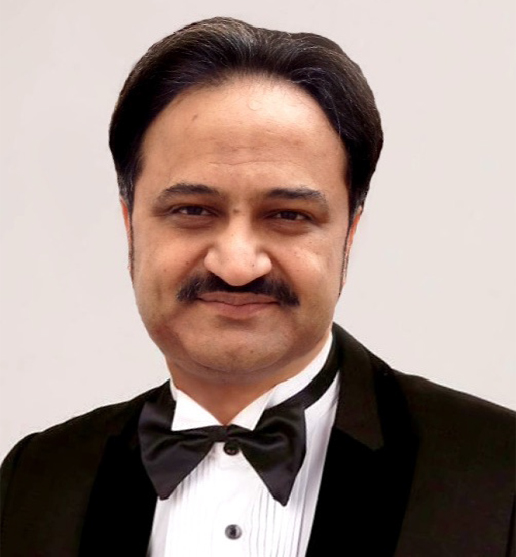
The writer is an
economist, anchor,
analyst and the
President of All
Pakistan Private
Schools’ Federation
president@Pakistan
privateschools.com
Sikhs have faced increasing discrimination in India, especially with the growth of Hindu nationalism. The Khalistan movement and its demand for a separate Sikh state have persisted in various forms for well over fifty years in Punjab and the Sikh diaspora abroad. Amritpal Singh is a follower of the Sikh freedom fighter Jarnail Singh Bhindranwale and took the reins of the ‘Waris Punjab De’ organization following the death of its founder Deep Sidhu. Hundreds of followers of Amritpal Singh, a pro-Khalistan leader, and preacher, clashed with police outside Ajnala police station near Amritsar, demanding the release of one of their colleagues who had been taken into custody in an alleged kidnapping case. This individual, an aide of Amritpal Singh named Lovepreet Singh ‘Toofan’, was released from Amritsar Central Jail after a court in Ajnala issued orders to discharge him based on an application by the police. The Congress warned against the return of the days of violence, which every Punjabi is scared of. The Sikh community across the globe expressed its anger and rage against Indian machinations and the arrest of its community leaders in Indian Punjab. The status of the Khalistan movement today is that the diaspora is composed predominantly of people who don’t want to live in India. These people include many who remember the bad old brutal days of the 80s, and thus the support for Khalistan remains stronger there. The deep-rooted anger over Operation Blue Star and the desecration of the Golden Temple continues to resonate with some of the newer generations of Sikhs. Bhindranwale is viewed as a martyr and the 1980s are remembered as dark times, this has now manifested into tangible political support for the Khalistan cause. Hindu extremist organizations openly called for a military crackdown against the Sikh community in Punjab and Haryana. Sikh diaspora across the globe reacted angrily to RSS’ agenda in India Punjab. Punjab police admitted that it was a wrong arrest only when Sikhs showed their strength. Sikh Nationalists are arrested for asking for Sikh Nation while Hindu Nationalists asking for Hindu Rashtra are honored. India is a Banana republic with no rule or law.
To understand the current crisis in Indian Punjab and the anti-Hindutva wave in the Sikh community across the globe, one should peep into the history of the Sikh struggle for freedom, identity, and sovereignty. Khalsa is referred to as the community that practices Sikhism as a faith and a special group of initiated Sikhs. The Khalsa tradition was introduced in 1699 by Guru Gobind Singh, the 10th Guru, after his father Guru Tegh Bahadur. In the modern age, the idea to form a separate Sikh homeland began during the fall of the British empire. In 1940 for the first time, an explicit call for Khalistan was made in a pamphlet by the same name. It continued through the 1970s and reached its peak in the late 1980s as a separatist movement. The movement started spreading to Chandigarh, much of northern India, and parts of western India. Jagjit Singh Chohan is the discredited founder of the Khalistan movement. In his early life, he was elected to the Punjab Assembly in 1967. He then became the finance minister. However, in 1969 he lost the Assembly elections, moved to Britain in 1969, and began campaigning for Khalistan to be created. In 1979, he formed the Khalistan National Council 1979. On June 13, 1984, Chohan announced a government in exile, and on October 31, 1984. Sant Jarnail Singh Bhindranwale Shaheed had identified the root cause of Sikh disenfranchisement and openly called for a revolt against Brahmin Raj. By 1984, the situation in Punjab had become increasingly untenable. Operation Blue Star began on June 1, 1984, but due to fierce resistance from Bhindranwale and his devotees, the Army’s operation became larger and more violent, with the use of tanks and air support. The image of Indian Army tanks shelling the holiest shrine of Sikhism was traumatic, and the very large number of civilian casualties that occurred during the operation added to the trauma. According to the government, 83 Indian Army soldiers were killed and 249 were injured in the operation. A total of 493 militants and civilians were killed in the operation. Other estimates the number of casualties is much higher — as much as 3,000. The operation coincided with the martyrdom day of Guru Arjan Dev, the fifth guru of the Sikhs; hence the number of pilgrims to the Golden Temple was higher than usual. Bhindranwale was martyred and the Golden Temple was freed from his followers — it gravely wounded the Sikh community around the world. It also galvanized the demand for Khalistan. On October 31, 1984, Prime Minister Indira Gandhi was killed by two Sikh bodyguards. This triggered the worst communal violence since Partition — according to estimates, over 8,000 Sikhs were massacred in massive anti-Sikh street violence. A year later, Sikh nationalists based in Canada blew up an Air India flight killing 329 people. They claimed that the attack was to avenge Bhindranwale’s killing. Indian Punjab saw the worst state violence, which lasted till 1995. There are historical reasons for the Sikh fight for Khalistan and economic empowerment; this proud and enterprising community has proven its mettle in the world, and the Sikh diaspora of today is one of the wealthiest in the West.
Khalistan is developing into a significant force in South East Asia, Australia, the US, UK, Canada, and Europe. India must understand that the aim for Khalistan shouldn’t be seen as evil and taboo, It’s an ideology and ideology never dies.
Anandpur Sahib Resolution-based requests were the focus of Bhindranwale’s protracted battle in the 1980s. In August 1982, he started the Dharam Yudh Morcha, urging Sikhs to get back to their religious principles and battle against drug and alcohol abuse as well as lax religious customs like youth haircutting. The return of Chandigarh to Punjab and obtaining a bigger share of irrigation water for that province were two other important economic goals of the Dharam Yudh Morcha. Sikhs for Justice (SFJ), an organization with offices in the US and Canada and led by Gurpatwant Singh Pannu, has been advocating for an autonomous Khalistan and for the RSS to be designated as a terrorist group. Similar to this, Dr. Amarjit Singh, a well-known Washington-based TV personality and the chairman of Khalistan Affairs, has elevated the voice of the Sikh community to inform the Sikh diaspora and the larger international community of the community’s aspirations. Dr. Amarjit Singh, in his program Sacho Sach compared the current crisis in India Punjab to a Sikh Youth genocide by Modi and his cohorts in Punjab. IRSA releases 98,900 cusecs water, fast-forward to September 2020, Sikhs led the farmer demonstrations in Punjab and Haryana laying a partial siege of Delhi. Since 1984, Sikhs were continuously being exploited, and there was a conscious effort to drive this prosperous group into drug use and poverty. Punjab in India is currently lagging behind many other states. In terms of per capita income, Punjab used to be among the top five states; currently, it is ranked 19th, even after Mizoram and Uttarakhand. The economic development of Punjab and Haryana, which split off from one Punjab, may be fascinating to compare, but Haryana is now one of the top five states in India, and its per capita income is near twice that of Punjab. The cause is clear: Punjab, which is primarily Sikh, has fallen behind Hindu-majority Haryana. The RSS has tried to destroy Sikh identity and pitch Sikhs against Muslims; however, the Sikh youth has galvanized the Khalistan movement within and outside India. The next few years will be crucial for the future of this proud community; hopefully, the proud Sikh nation will be able to achieve the ultimate goal of their separate and independent homeland. Khalistan seems to revive in Punjab, recently questions have been raised regarding the resurrection of the notion of Khalistan. In this year’s February, pro-Khalistani groups like Sikhs for Justice (SFJ) have been trying to revive the Khalistani movement and sentiments in Punjab. On May 8, flags of Khalistan were found sticking to the main entrance of the Himachal Pradesh Assembly complex in Dharamsala. Himachal Pradesh Police booked SFJ leader Gurpatwant Singh Pannun under UAPA and sealed the state’s borders and beefed up security in the state citing pro-Khalistan activities. This happened following the communal rift between Hindu and Sikh groups in Patiala. While most Sikhs found themselves in India, they were a small minority (2% of the population) in the country. The political struggle for greater autonomy began with the Punjabi Suba Movement for the creation of a Punjabi-speaking state. In the aftermath of Operation Blue Star, the movement continues to evoke sympathy and support among sections of the Sikh population, especially in the Sikh diaspora. Today, the movement is also fuelled by unemployment, the drug menace in Punjab, dissatisfaction among the Sikh diaspora, and other social issues. For Indian Sikhs and their large diaspora, Khalistan, or a “pure land for Sikhs,” has remained a dream. Khalistan has been a steadfast demand of the Sikh community, from the splendor of Sikh dominance in the subcontinent to painful memories of the operation and desecration of Akal Takht. Khalistan is developing into a significant force in South East Asia, Australia, the US, the UK, Canada, and Europe. India must understand that the aim for Khalistan shouldn’t be seen as evil and taboo, It’s an ideology and ideology never dies.

